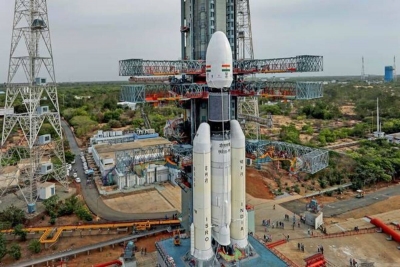
The Chandrayaan-2, the second lunar exploration mission after Chandrayaan-1 that has been developed by the Indian Space Research Organisation (ISRO), has been in orbit around the moon for over two years now. During a Lunar Science Workshop that was held early in September 2021, ISRO chairman K Sivan stated that the spacecraft has completed over 9.000 orbits around the moon
Launched on July 22 2019, the Chandrayaan-2 mission consisted of a lunar orbiter, along with the Vikram lander and the Pragyan lunar rover. Having reached the moon’s orbit on August 20 2019, it then positioned itself for Vikram’s landing.
Landing failure
The landing, scheduled for September 6 2019, however, turned out to be a failure. Even though Vikram was on track and performed as expected till, kilometres away from the lunar surface, it then lost communications with the ground stations and had a hard landing on the moon. The landing failure thus meant that the Vikram lander and the Pragyan rovers were a failure. Even though the landing phase of the Chandrayaan-2 mission was a failure, the orbiter continued to go around the moon. This means that the eight instruments onboard have been able to study the moon, both using remote sensing and in-situ techniques.
Chromium and manganese
One of the most important findings from these observations for over two years is the presence of chromium and manganese on the moon’s surface. Not only were the presence of these elements revealed, but the weight of these components as a percentage of the weight of the moon was also determined.
Apart from revealing these findings in the workshop in September 2021, it was also conveyed that raw data is continuously being made available in the public domain. Sivan made it clear that Chandrayaan-2’s data is “national property” and has urged the entire scientific community of the country to put it to good use and further our knowledge of the moon.
Picture Credit : Google




